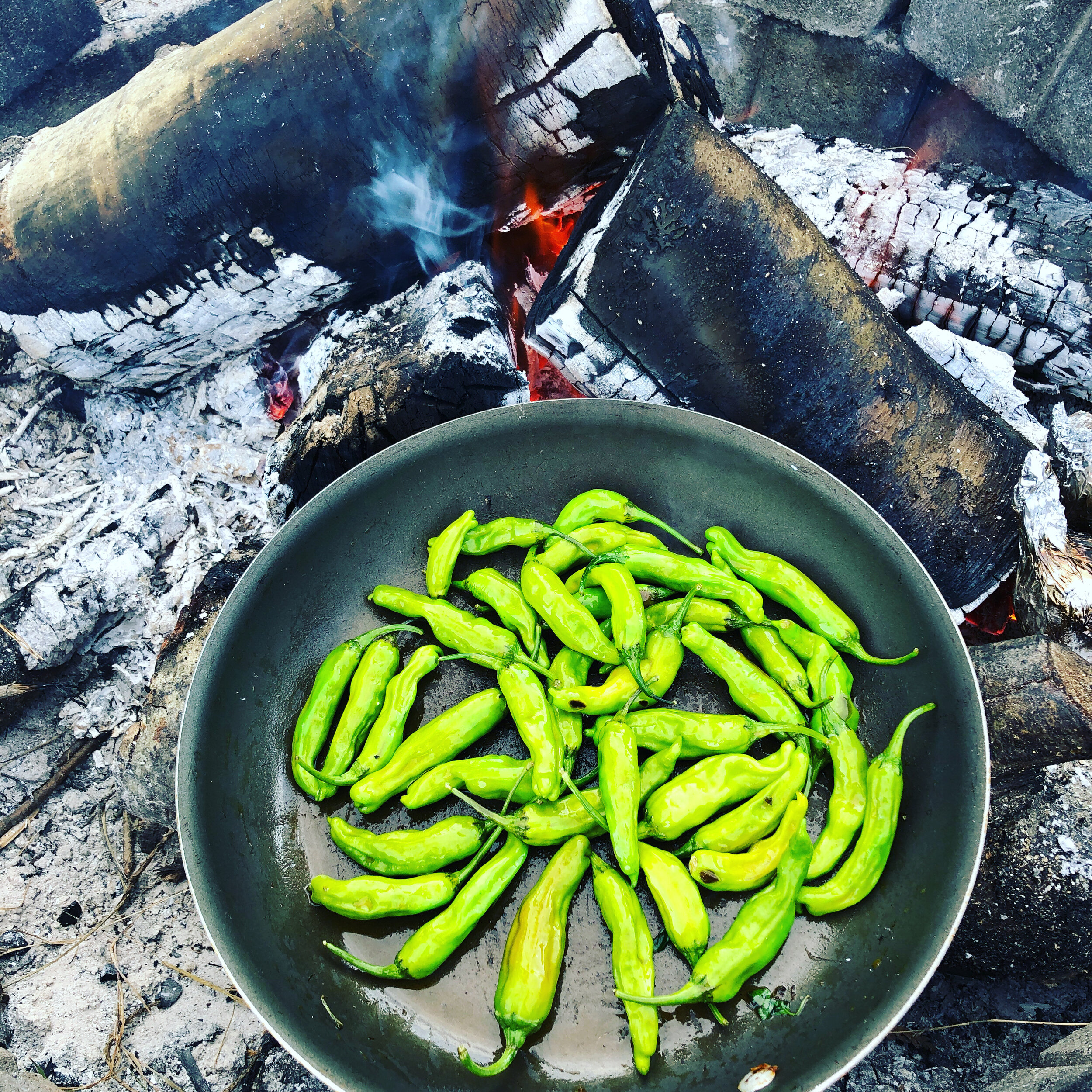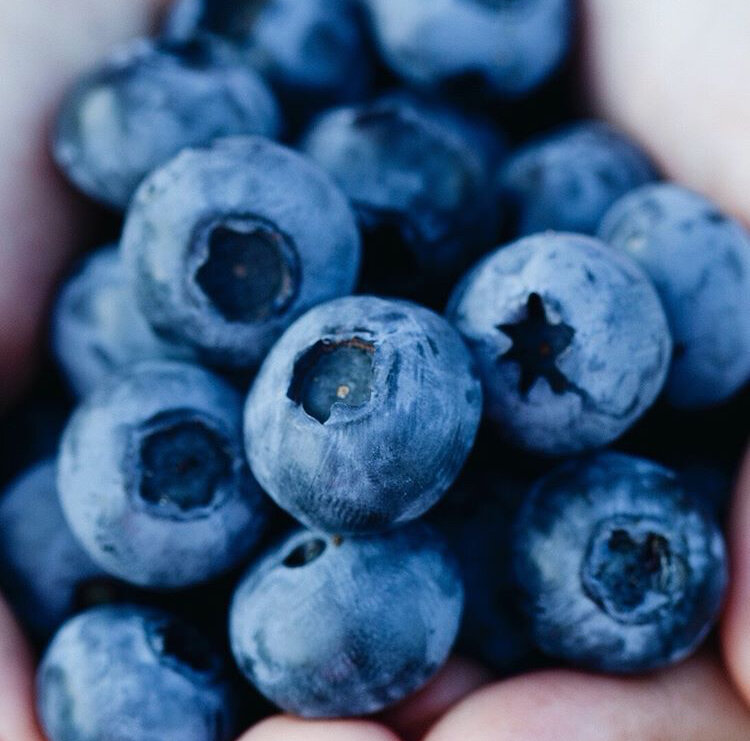Here’s a test to see how well you know the QA Farmers’ Market. Which farmers moved across the country in a vegetable oil-powered van, live with 6 cats and one two-year-old, and are known around town for their Italian chard? If you guessed Skinny Kitty, you are definitely a local! We connected with Bonnie Briggs and David Mackie, owners of Skinny Kitty Farm in Mount Vernon, to learn more about their farming style, how to keep crows away from our own crops and how a CSA box changed their lives.
Q: How did you get into farming?
A: Bonnie and I have always loved good food, so when we moved in together, we decided to try a CSA. This opened the gate to the farm in a way. We started driving out to the Amish farm country outside Philadelphia--where we were living at the time--to buy raw milk and fresh eggs. We got to know the farmers and what that lifestyle was like. This happened at a time when we were both struggling to find happiness in our other jobs. I was spending a lot of time on the road working, and since we worked in theatre, we were always working late nights. We fell more and more in love with agriculture while at the same time falling out of love with theatre. So, we decided to pack up our two cats and drive our veggie-oil powered Vanagon across the country! We still work in theatre, primarily in the winter, but we get to choose what shows we want to do now, rather than having to take them all because it's our only job. Balance is important in life.
Q: What's the hardest thing to do on the farm?
A: Walking. Anytime there is something to be done we have to walk there, so we are constantly walking on the farm. One thing we focus on is freshness of product—our salad mix lasts 10 days in your fridge! One way we do this is by walking each crop back to the wash station directly after harvesting it. This removes the "field-heat" and helps it last longer. When we harvest 20 different crops, that means 20 trips to various fields on the farm.
Q: Could you tell me how you came up with your farm’s name? Do you have a special kitty on the farm?
A: The name Skinny Kitty Farms came from our love of cats, and the need for a memorable brand. We were told as we were starting the business that small farms need something that sets them apart from the rest of the market. It came down to Fat Cat Farms and Skinny Kitty Farms. We thought Fat Cat conjured up the wrong image of a greedy money-grubbing cat, and we're pretty skinny ourselves! Our cats include Stumpy, an old man cat, all black. He is named after the drummer from Spinal Tap. Wyatt, an old city kitty, white with large orange spots. We rescued Wyatt back when Bonnie and I lived in Philadelphia. Sasha, our wild lady cat, fuzzy gray. Daffney is all black with white paws and bib. She’s our field manager. When we are out working in the field, she will come up and run by for scratches. Gary Laser Eyes and Tout, Calico and fuzzy. These two boys run around like they own the place.
Q: What product are you known for? What are your best sellers?
A: Our Italian Heirloom Bietole Chard. We convert people who hate chard into chard lovers with this stuff! It's sweeter than Swiss Chard and doesn't get as soupy when you cook it. Beautiful bright green with a soft crunch and mild flavor. We have sold the most apples by weight, chard by volume, and salad by profit.
Q: How long have you had a booth at the QAFM? Do you sell at other markets?
A: This will be our 5th year up on the hill. Our home market is Capitol Hill on Sundays and Des Moines' Saturday market is a third market, which we started last year. Queen Anne has some very loyal customers who have gotten to know us as a family. They ask about our son or the kitties each week and look forward to their favorite items coming to market. That's a special relationship and one that keeps us coming back each year.
Q: Have you always sold meat?
A: Yes, livestock is an important part of our farming systems. Our land is perfect for vegetable production, so that is the bulk of what we farm. Being on a river delta, we have fertile soil with an incredible structure. It is the perfect blend of sand, clay, and broken down, carbon-rich material. However, nature works in circles and loops, so to keep a complete circle on our farm, we use livestock to mimic the impacts of wildlife on the production side of the farm. So as long as I'm selling veg, I'll be selling meat.
Q: Could you share with us a good recipe we could make from shopping your stand?
A: For veggies, we love simple! Sauté onions, garlic, and greens together and serve it over rice or toast. Cook the hardest items first and the softest items last. Use a stock like chicken or pork to maintain moisture and don't be afraid of bold flavors like stoneground mustard (a personal favorite when cooking chard), or Gochujang. Add beans if you need a hearty dish. Simple, flavorful, and it only takes 10-20 minutes. We eat A LOT of sautéed vegetables with beans on toast.
Q: Is there anything new that you are going to be selling next this week?
A: Our rainbow chard will be in! And more kohlrabi bunches. These two can make a great slaw- Shred the kohlrabi, skin-on with a cheese grater. Fine chop the chard into thin ribbons. Mix up a dressing with yogurt, Dijon mustard, rice wine vinegar, salt and pepper. Toss it all together and add nuts, dried fruit, shredded apple, and get really crazy and pickle the chard stems and add them in too!
Q: Any farm tips for the home farmers? My family can't keep the crows from pecking away at our backyard garden.
A: Crows can be tough; they are smart and persistent. A farmer should do 3 things: provide an alternative, create a disruption, and finally create a physical barrier. So first an alternative to your tasty garden could be [planting] a crab apple or cherry tree you allow to grow tall. The crows can feast on the fruit above and will be less interested in your garden. The classic scarecrow is surprisingly effective. Add some flashy CDs and move them around every few days for maximum effectiveness. Finally, a physical barrier like bird netting is sometimes the only way to keep pests off. You might have to use quite a bit now, while the other elements grow and develop, but eventually you may only need it on crops like berries.
Q: Can customers pre-order your produce or meat online?
A: No, pre-orders stress me out! I have a degree in theatre arts and electrical engineering, so the business side of things isn't easy for me to do. Many of the farms doing pre-orders are paying for software to do all this for them or paying a person or two to handle it. It's just me and Bonnie, and we have a lot of farming to do. So, we keep our business model simple; grow things well, take them to market and sell them.
Interview by QAFM reporter Max Chandrasekaran.






































